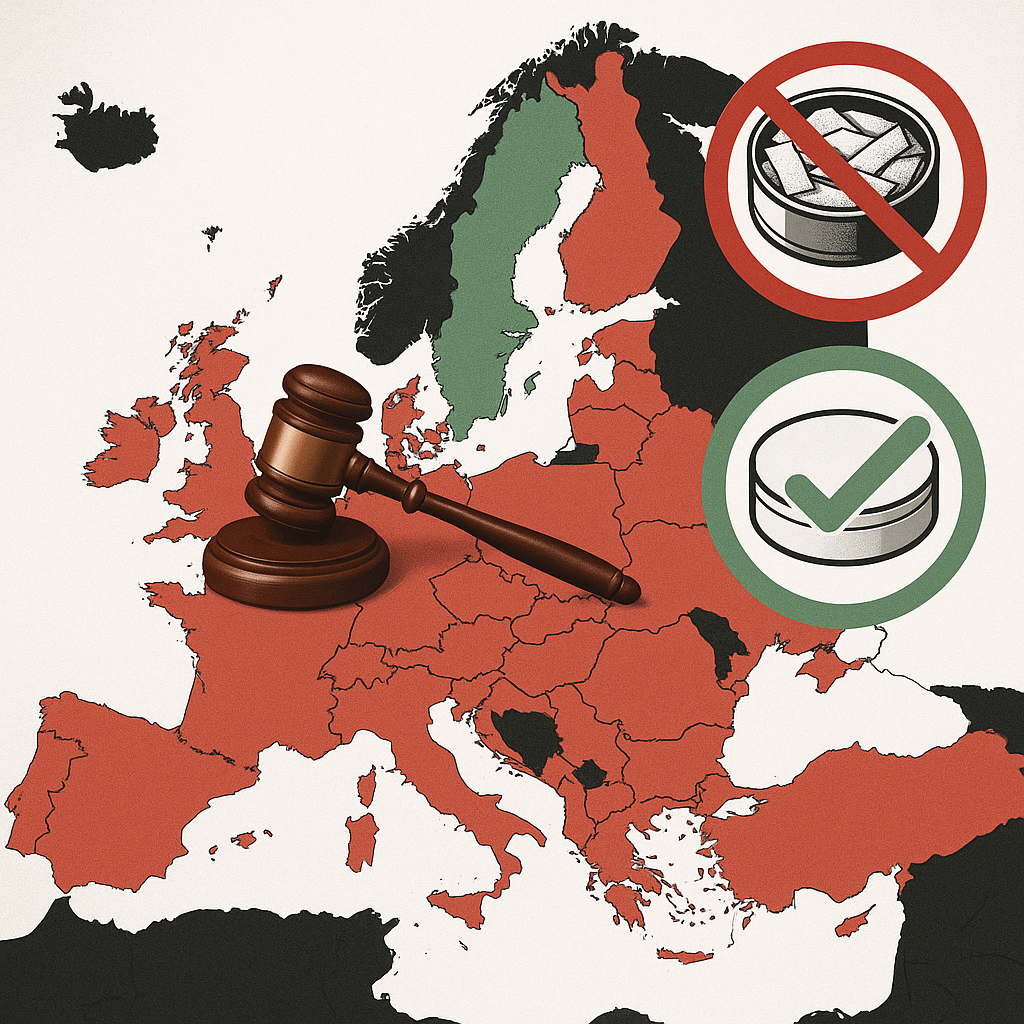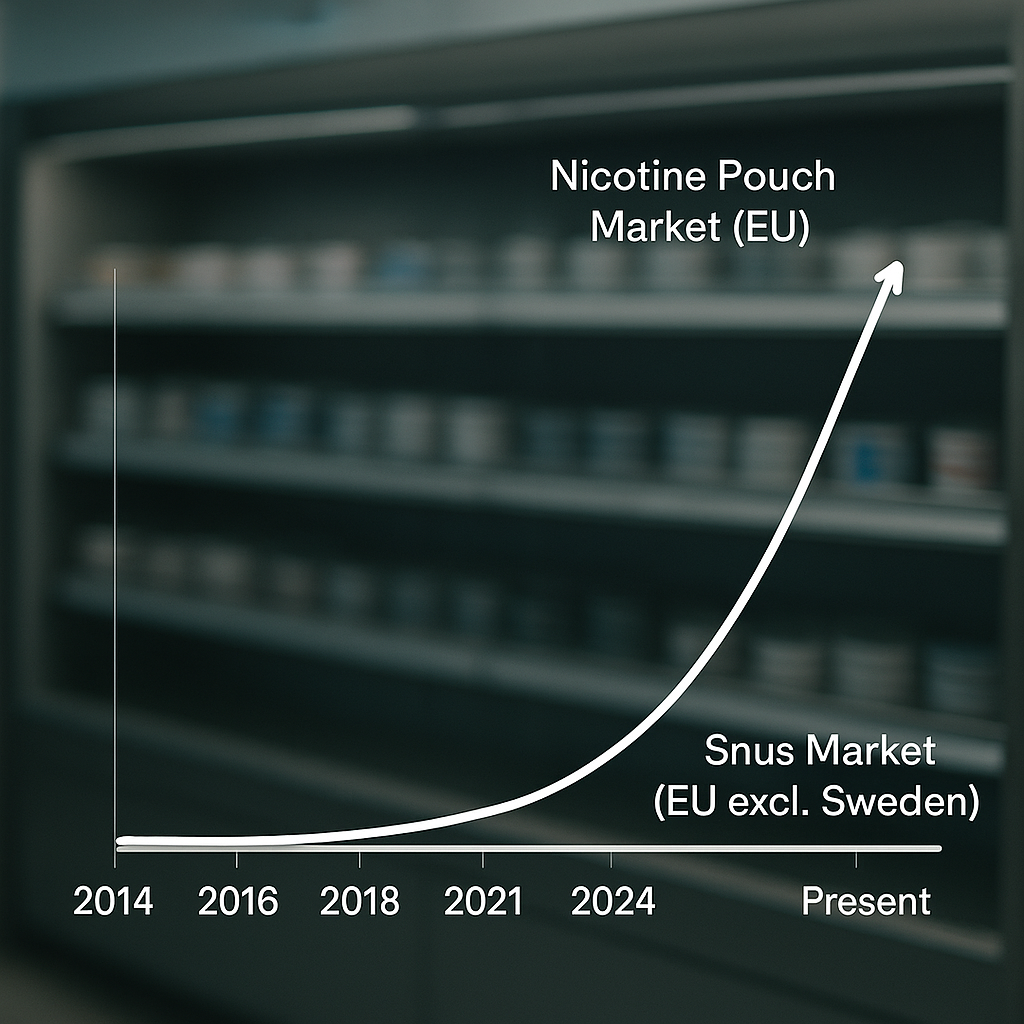The EU Snus Ban Explained: A Guide for Brands & Retailers
This guide offers the eu snus ban explained, detailing the European Union’s prohibition on the sale of snus, a type of oral tobacco product. This directive directly impacts market entry strategies for oral nicotine products within the EU. Understanding its nuances is critical for brands and retailers navigating the European, North American, Middle Eastern, and African markets.
1. The EU Snus Ban Explained: A Clear Definition
The eu snus ban refers to the European Union’s prohibition on the sale of snus, a type of oral tobacco product. This ban is codified in the EU’s Tobacco Products Directive (TPD), a legislative framework governing the manufacturing, presentation, and sale of tobacco and related products. It applies to all member states except for Sweden, which secured a specific exemption.
Crucially, the ban is specific to products containing tobacco intended for oral use that are not meant to be smoked or chewed. This regulation does not apply to tobacco-free products, such as modern nicotine pouches. The distinction between tobacco-containing products and tobacco-free alternatives is central to market compliance within the EU.

Key Points from This Section:
- The EU Snus Ban prohibits the sale of oral tobacco products in most EU member states, a key aspect of oral nicotine market regulation.
- This prohibition is part of the Tobacco Products Directive (TPD).
- Sweden is exempt from the ban due to historical precedent.
- The ban explicitly excludes tobacco-free products like nicotine pouches.
2. History and Origin of the Ban
The initial ban on oral tobacco was introduced in 1992 through Directive 92/41/EEC European Union Law Database for Directive 92/41/EEC. The primary stated reason was to prevent the emergence of a new, potentially addictive tobacco product in markets where it was not traditionally used. This preventative measure aimed to control the spread of a product not historically part of most European tobacco consumption patterns.
When Sweden joined the EU in 1995, it negotiated a permanent exemption, known as a derogation, from the ban. This exemption was granted due to the product’s long-standing cultural tradition and widespread use within Sweden. The ban was upheld and carried forward in subsequent versions of the Tobacco Products Directive, including the most recent TPD3 discussions, indicating its persistent regulatory stance.

Key Points from This Section:
- The EU snus ban originated in 1992 to prevent the introduction of new tobacco products.
- Sweden secured a permanent exemption upon joining the EU in 1995 due to cultural tradition.
- The ban has been consistently maintained in subsequent EU tobacco directives.
3. Scope of the Regulation: What Is and Isn’t Banned?
The eu snus ban explained explicitly defines the products subject to prohibition and those that are permitted. This clarity is essential for understanding market opportunities within the European economic area. The regulation distinguishes based on the presence or absence of tobacco.
- Banned Product: Snus. Defined as a moist powder or portioned tobacco product placed under the lip. The key component that triggers the ban is the presence of tobacco leaf or dust.
- Permitted Product: Nicotine Pouches. Defined as pre-portioned pouches containing nicotine and food-grade fillers (like plant fiber) but no tobacco. This tobacco-free composition places them outside the scope of the snus ban. The Rise of Tobacco-Free Nicotine Pouches
- Permitted Product: Chewing Tobacco. The ban specifically excludes products intended to be chewed, as their method of consumption and historical context differ from snus.
- Permitted Product: Nasal Snuff. The ban is on oral tobacco, not nasal products.

Key Points from This Section:
- The EU snus ban specifically targets tobacco-containing oral products.
- Nicotine pouches are permitted because they are entirely tobacco-free.
- Chewing tobacco and nasal snuff are also exempt from this specific ban.
4. The Market Impact: How the Ban Created the Nicotine Pouch Category
The EU-wide ban on snus effectively created a market vacuum for a legal, smoke-free oral nicotine product. Consumers in Europe seeking alternatives to smoking had no access to traditional oral tobacco products, despite a clear demand for discreet nicotine delivery methods. This regulatory gap inadvertently spurred significant innovation within the nicotine industry.
This environment led directly to the development and rapid growth of the tobacco-free nicotine pouch category. Nicotine pouches became the legally compliant solution, offering a similar user experience to snus—discreet oral use and nicotine delivery—without containing the banned ingredient, tobacco. This positioned them as a readily available and permissible alternative, driving their widespread adoption across European markets.

Key Points from This Section:
- The snus ban created a demand for a legal, smoke-free oral nicotine product in the EU.
- This regulatory environment directly facilitated the innovation and development of nicotine pouches.
- Nicotine pouches fulfill the market need while complying with EU regulations.
5. Key Comparison: Snus vs. Nicotine Pouches for EU Brands
Understanding the distinctions between snus and nicotine pouches is fundamental for businesses considering market entry or expansion in Europe, the Middle East, or North America. These differences directly impact legal compliance, operational logistics, and consumer appeal.
5.1 Legal & Market Access
- Snus: Sale is illegal in all EU markets except Sweden. This presents an insurmountable barrier to entry for distributors and brands aiming for broad EU penetration.
- Nicotine Pouches: Legal for sale across the EU, North America, and the Middle East, subject to specific national regulations on nicotine content, packaging, and marketing. This offers a vast, accessible market for new and established brands.
5.2 Supply Chain & Production
- Snus: Production is complex due to tobacco-specific regulations, sourcing requirements for tobacco leaf, and specialized processing. This can lead to longer lead times and higher regulatory burdens.
- Nicotine Pouches: Simpler production processes utilizing widely available food-grade and pharmaceutical-grade ingredients. This simplifies sourcing, allows for faster Research & Development (R&D) cycles, and expedites market launch. Understanding Nicotine Pouch Ingredients
5.3 Consumer Perception
- Snus: Often associated with traditional tobacco use, which can carry negative connotations such as potential tooth staining or perceived health risks linked to tobacco.
- Nicotine Pouches: Perceived as a modern, clean, and discreet alternative to traditional tobacco products. The “all-white” format is a significant marketing advantage, appealing to a broader demographic seeking cleaner nicotine consumption.
Key Points from This Section:
- Nicotine pouches offer significantly broader legal market access compared to snus across key global regions.
- Their production process is less complex and subject to fewer tobacco-specific regulations.
- Nicotine pouches benefit from a modern, clean consumer perception, enhancing market appeal.
6. Frequently Asked Questions (FAQ)
Is snus illegal everywhere in Europe?
No. It is legal to sell and use in Sweden due to a specific exemption granted when it joined the EU. It is also legal in non-EU countries like Norway and Switzerland. However, it is banned for commercial sale across the rest of the EU bloc.
Why are nicotine pouches legal if snus is banned?
The ban is specifically on “tobacco for oral use.” Nicotine pouches do not contain tobacco leaf, dust, or stem. They use synthetic nicotine or nicotine derived from tobacco, but the tobacco plant itself is not present in the final product. This distinction places them outside the scope of this specific ban, making them legally compliant across most EU markets.
Can I import snus into an EU country for personal use?
Rules for personal importation of snus vary by country within the EU and are often subject to strict limits on quantity. However, commercial sale and distribution of snus remain illegal in most EU member states. This regulatory environment creates a significant opportunity for legal, locally available nicotine pouch brands to capture demand from consumers seeking oral nicotine products.
Does the ban affect other regions like North America or the Middle East?
No. The eu snus ban explained here is a regulation specific to the European Union. Other markets, such as the United States, have their own distinct regulatory frameworks for all oral nicotine and tobacco products. For example, the U.S. FDA employs its own rigorous Premarket Tobacco Application (PMTA) process for such products U.S. FDA PMTA Guidance Document. Nicotine pouches are widely available and legally regulated in North American and Middle Eastern markets, operating under different legislative conditions than those in the EU.

